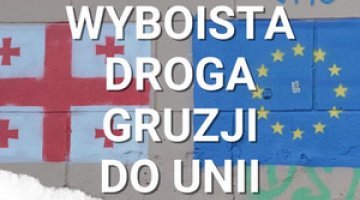Georgia: violent protests and signs of erosion in the ruling camp
Since 28 November, protests have been ongoing in several Georgian cities. They were triggered by Prime Minister Irakli Kobakhidze announcement that Georgia will not commence EU accession talks until 2028 (see ‘Georgia is suspending its EU integration process’). Demonstrations are being held daily, primarily outside the parliament building in Tbilisi. Law enforcement agencies have responded with brutality in their attempts to disperse the protests, leading to beatings and injuries, with approximately 250 individuals having been detained. Protesters have erected barricades and employed flares and fireworks during clashes with the police. Protests have also occurred in other cities (Batumi, Kutaisi) and smaller towns such as Zugdidi, Khashuri, and Mestia.
Employees of ministries and central administration institutions have also opposed the suspension of the EU integration process. Around 100 diplomats, both from the Ministry of Foreign Affairs headquarters and foreign missions, signed a letter deeming the government’s decision unconstitutional, citing that the pursuit of EU and NATO membership is enshrined in Georgia’s basic law. Georgia’s ambassadors to the US, the Netherlands, and the Czech Republic, among others, alongside a deputy minister, have resigned. Officials from the ministries of internal affairs and defence, as well as the Constitutional Court, have issued similar letters. Georgia’s largest banks, mobile phone operators, and cultural institutions have also voiced their support for the country’s European orientation. The suspension of the EU integration process has drawn criticism from representatives of Western countries and institutions, with Washington adopting the strongest stance by suspending its strategic partnership mechanism with Georgia.
The unfolding protests reveal growing determination on both sides of the conflict. Protesters are prepared to risk their health to defend the country’s European future, while the authorities are intent on dispersing the crowds. Unlike previous demonstrations, where the authorities waited for protests to subside naturally, they are now employing more aggressive tactics. It remains uncertain how long the rallies will persist and how they will conclude.
Commentary
- The protests are grassroots in nature, spontaneous, and markedly different from previous demonstrations, such as those against the so-called foreign agent law in the spring this year or the irregularities surrounding the 26 October parliamentary election. These protests are occurring simultaneously in various locations and attracting diverse participants. While many protesters are young, supporters of the Georgian Dream party are also participating. The demonstrations lack a single coordinating centre and are not led or dominated by the opposition, although they have received significant support from President Salome Zourabichvili.
- The authorities have prioritised suppressing and discrediting the protests while striving to maintain the cohesion of the state apparatus. Law enforcement agencies have employed water cannons, tear gas, and physical violence, resulting in detentions and injuries. Official media coverage has focused on the alleged threat to public order, supposed vandalism by demonstrators, and claims that external forces are inciting the protests. Some narratives have even suggested a potential civil war scenario, citing the involvement of the volunteer Georgian Legion fighting in Ukraine.
- Two contrasting scenarios for the protests’ outcome remain equally plausible. In the first, the protesters might compel the government to make concessions, such as reversing the suspension of EU cooperation and agreeing to rerun the parliamentary election. This would require a critical mass of demonstrators, making dispersion physically unfeasible, alongside continued erosion and fragmentation within the ruling camp. Signs of such fragmentation include rumours about the potential resignation of the prime minister and the head of the State Security Service, both of whom have been allegedly blamed for the current situation by Georgian Dream leader Bidzina Ivanishvili. In the second scenario, the authorities could succeed in suppressing public resistance by intensifying repression against protest participants and targeting opponents within the state administration. It is less likely that the protests will dissipate due to fatigue or discouragement among participants, although the approaching winter might exacerbate such sentiments. A compromise between the government, civil society, and the opposition appears even more improbable.





